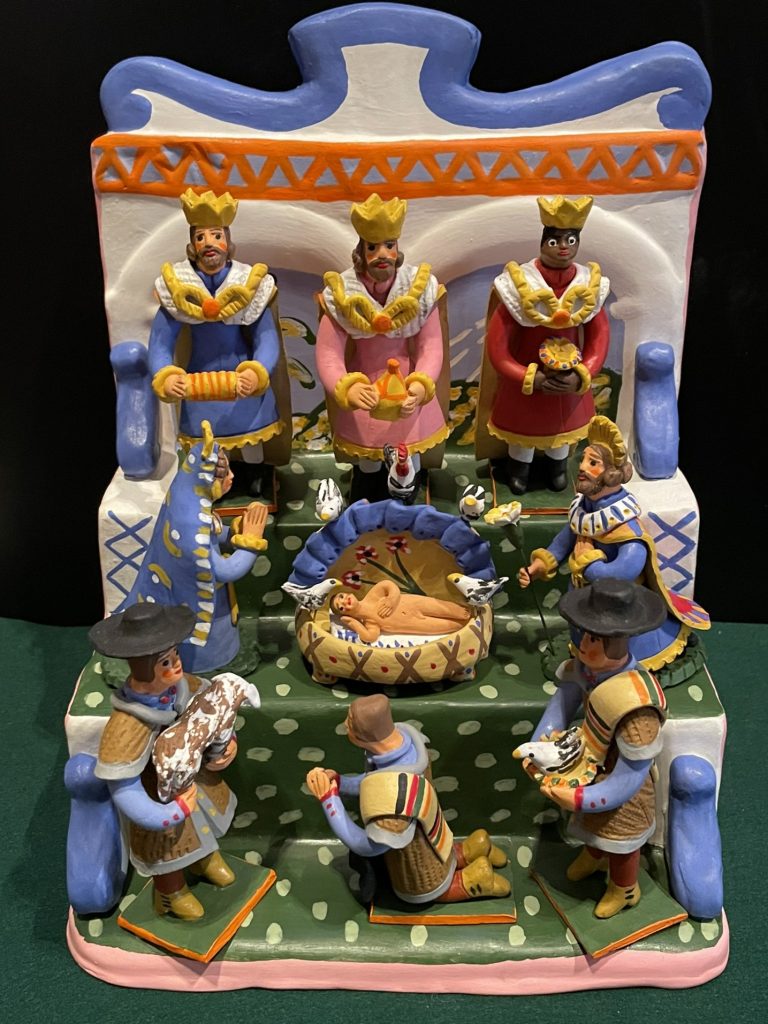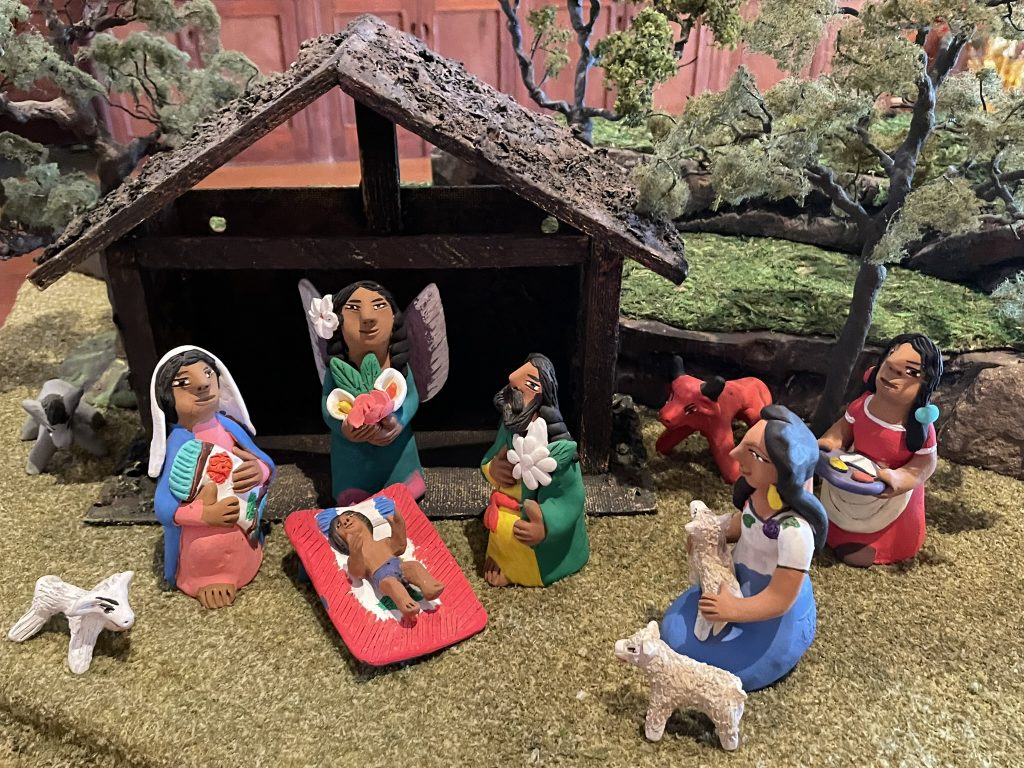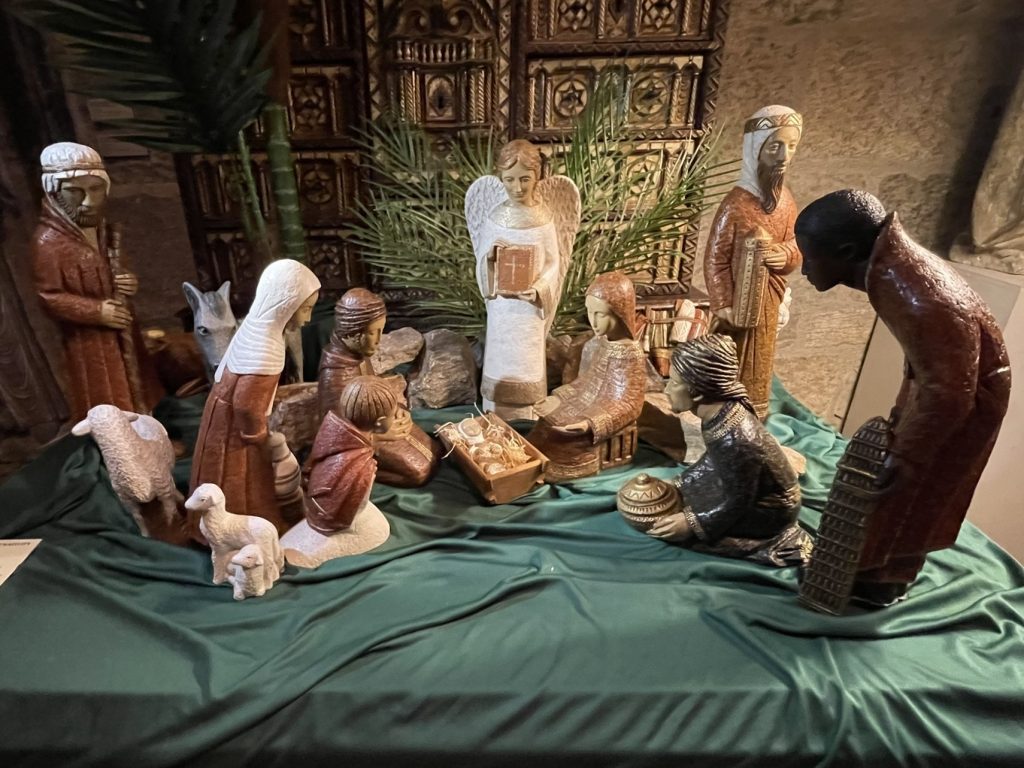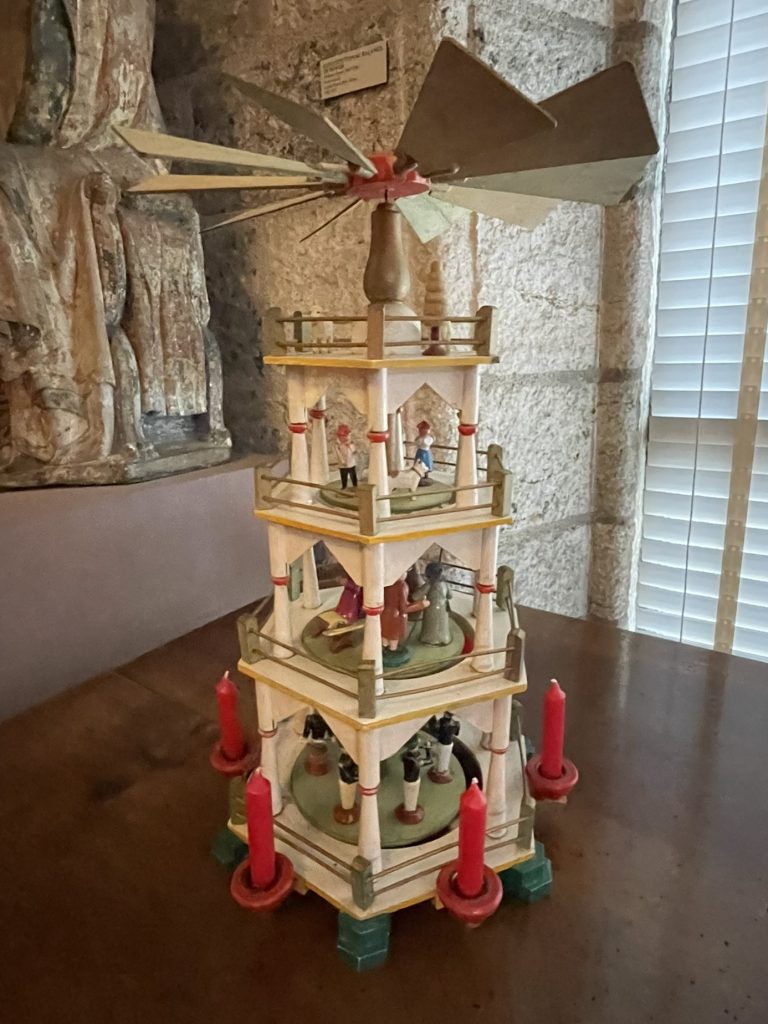Since 2009 the Glencairn Museum in Bryn Athyn, Pennsylvania has hosted an annual exhibition of World Nativities at the year end holidays. I went to tour the museum, but the exhibition was an added bonus. Nativity scenes from around the world are on display, reflecting local interpretations and beliefs. The exhibits are made from a variety of interesting materials. Though most seemed to date from the last 20 or 30 years, there are several much older. The displayed scenes are both from the Glencairn’s own collection, and those on loan from other museums.
The cover photo to this post is Kokeshi Nativity, Japan, 2015.



















Nativity Pyramids

“The first Christmas pyramids appeared in the 19th century. They include a rotating central spindle with multiple tiers, candle holders with candles that generate heat when lit, and a fan-like rotor at the top designed to catch the rising warmth.” (per the accompanying sign)
Fascinating! I’d never heard of such a thing!









One thought on “World Nativities at the Glencairn Museum”